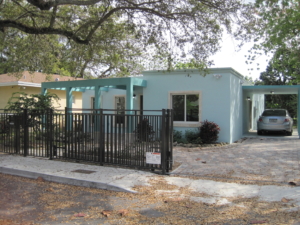 Last week I sold a home in Coconut Grove which is unlike any other: it is the first certified Fortified Construction and Energy Star home built in Miami-Dade County. The developers and sellers, Rochester Builders Inc., set out to build an affordable product with a construction standard that goes far beyond what is called for in Florida. They wanted to make the home energy efficient as well. They achieved their goal and I found them a lucky buyer.
Last week I sold a home in Coconut Grove which is unlike any other: it is the first certified Fortified Construction and Energy Star home built in Miami-Dade County. The developers and sellers, Rochester Builders Inc., set out to build an affordable product with a construction standard that goes far beyond what is called for in Florida. They wanted to make the home energy efficient as well. They achieved their goal and I found them a lucky buyer.
The Insurance Institute For Business & Home Safety, or IBHS, is the independent, non-profit organization that designates the Fortified Home certificates. There are three levels of designation: Bronze, Silver and Gold. Gold represents the highest standard for disaster protection, which the developers received. The methods and materials employed in the construction of the home ensure the utmost protection from hurricanes and other potential disasters. The Environmental Protection Agency designated the property a high Energy Star rating due to its energy-efficient appliances, lighting, heating, cooling, and ventilation systems. These ratings are not just accolades; they also translate into thousands of dollars in savings for the homeowner due to lower home insurance and utility costs.
Selling the house involved a three-month process from the day I got the listing to the day it closed. I used various methods and tools including listing it on the MLS, advertising it on our website, speaking with the pastor of the neighborhood church to get the word out to the community, as well as doing a mass mail-out through the Postal Service. The challenge was to inform the public of a unique product that had not been available before in this market. And that is exactly what I did.
As my broker, Tom Dixon, says “being a real estate agent is about problem solving”, it is about finding unique solutions to unique issues. The combination of our various methods prompted a lot of activity and interest in the house and it came down to choosing the right buyer.
So if you have a unique real estate problem or simply need representation in the sale or purchase of a property, give us a call and we will find you a solution.
Roger Lopez
Dixon Commercial Real Estate
[email protected]
305.443.4966









